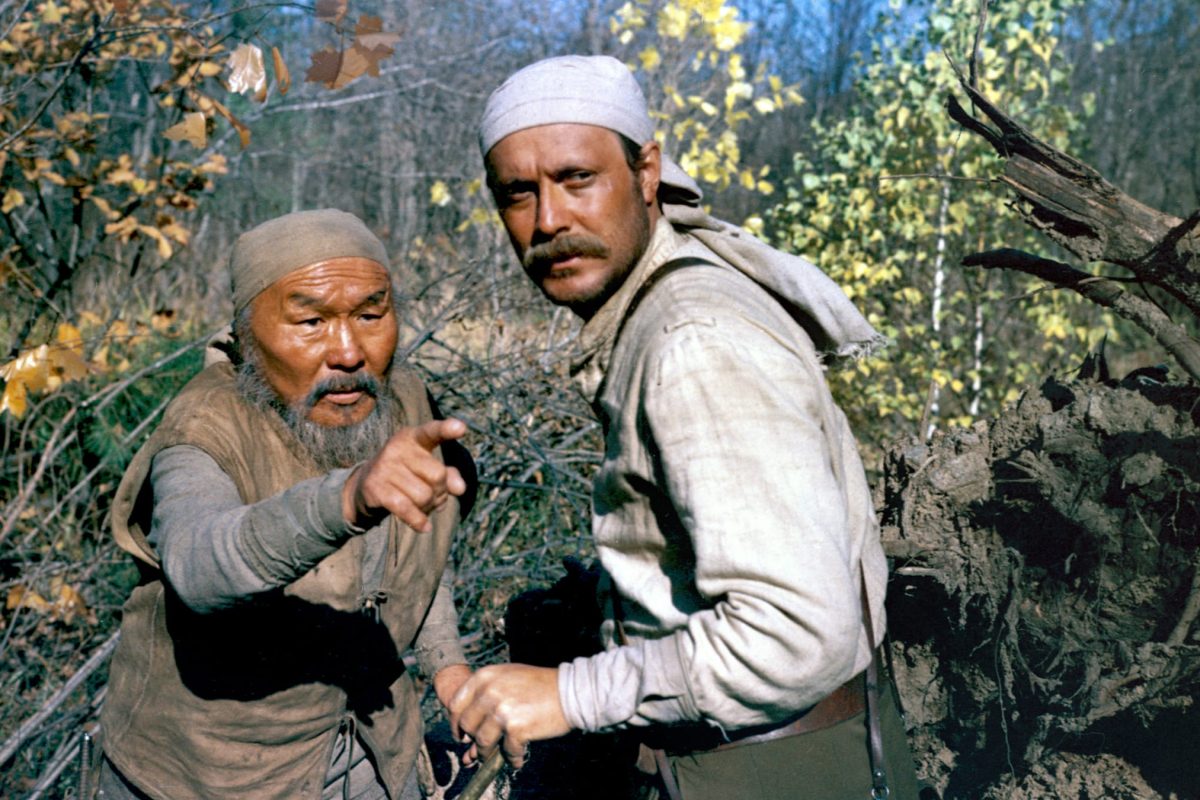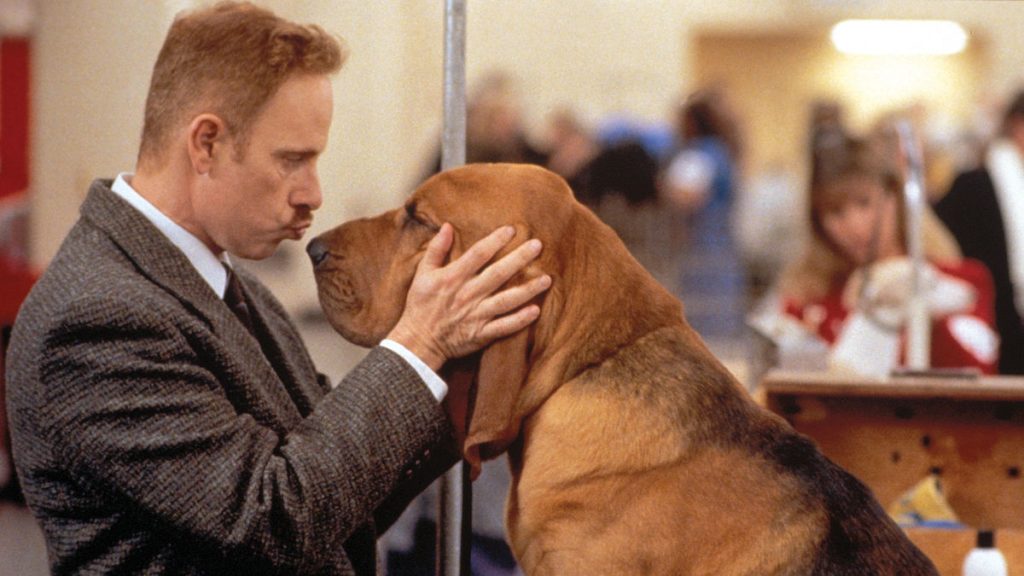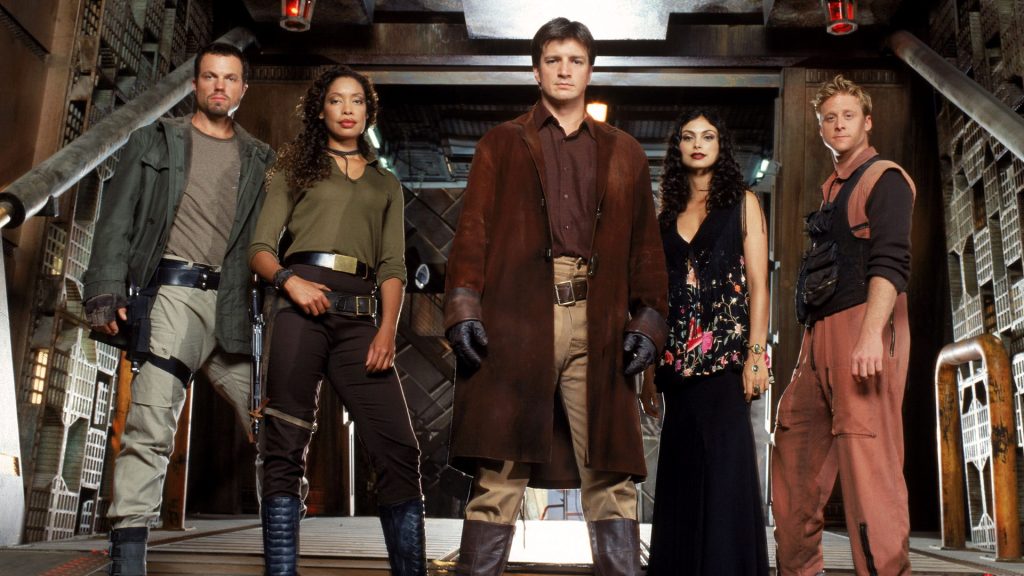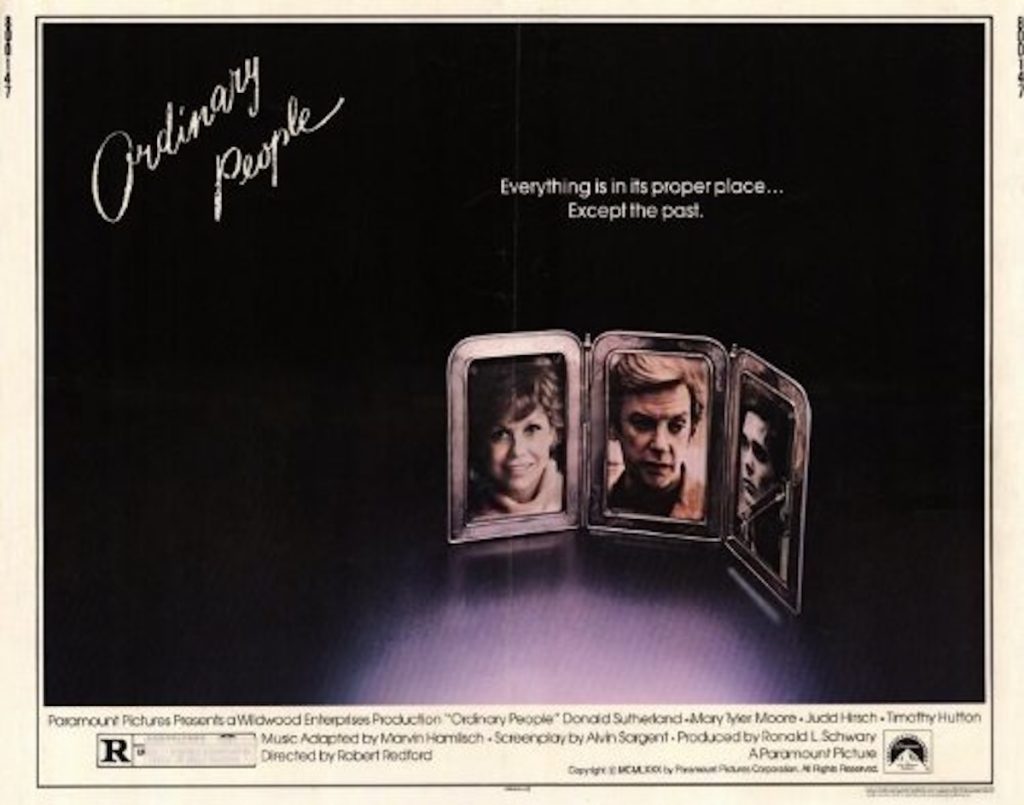In the early 1970s, Akira Kurosawa was at a low point. After the end of his exclusive contract with Toho Studios in 1966, he went to Hollywood: first working on Runaway Train for Embassy Pictures, which was postponed several times before being shelved (for the time being, anyway), and then spending two years in pre-production on 20th Century Fox’s war epic Tora! Tora! Tora!, only to be fired two weeks into shooting. On his return to Japan, he had to mortgage his house to finance Dodes’ka-den (1970), a commercial failure that met a cool reception at home and a mixed one abroad. In 1971, Kurosawa attempted to take his own life. By the end of the decade, George Lucas – having borrowed from Kurosawa’s The Hidden Fortress while making a little picture called Star Wars – and Francis Ford Coppola would wield their newfound power to ensure Kurosawa got back to directing big, beautiful and rightfully acclaimed historical epics. But in 1971, it seemed probable that he would never make another movie.
Kurosawa had wanted to adapt Dersu Uzala – Russian explorer Vladimir Arsenyev’s memoir of his journeys in the Russian Far East, titled for a trapper who became his friend and guide – as early as the 1930s. But realizing that he would need access to the East Siberian taiga region, it was a dream tantalizing out of reach. The release of a Soviet-made Dersu Uzala in 1961 made a Kurosawa version seem even less possible. Yet in 1973, when his making any film at all was unlikely, the Soviet film studio Mosfilm offered Kurosawa the access and funding to fulfill this impossible dream. The result, Dersu Uzala, released in 1975, has a more subdued reputation than some of his earlier masterpieces. But it has a strong claim for being the actual, for-real greatest film ever made.
It opens in 1910, with Vladimir Arsenyev (Yury Solomin) looking for the grave of a friend, buried between two tall trees “a long time ago,” he says first, before correcting himself: “Three years ago.” But the trees have been torn down. A village is built over what was so recently wilderness. Nothing remains to mark the grave. “Dersu,” Arsenyev says out loud, to no-one: an act of memory preservation defiant of its own futility.
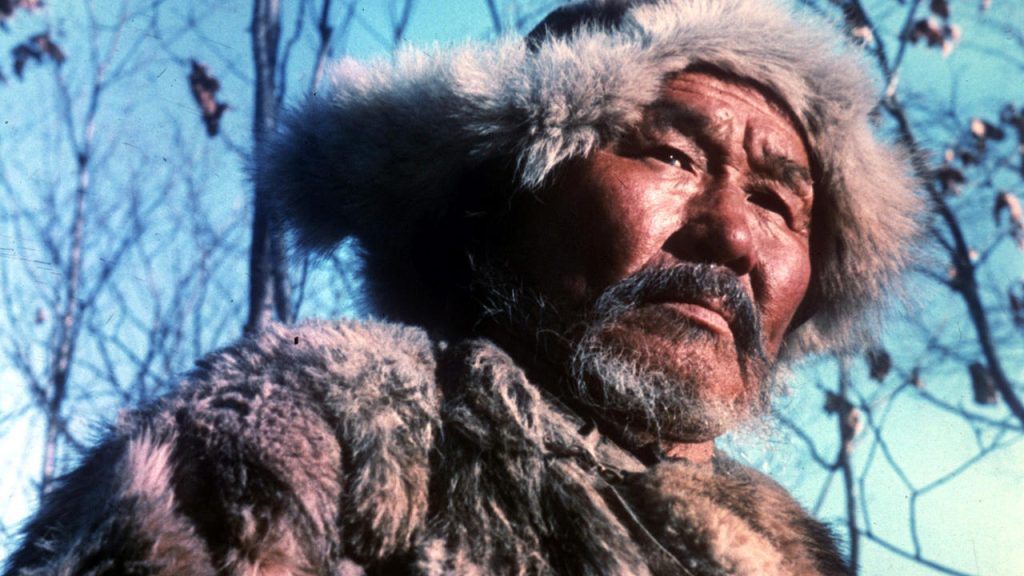
The story of Arsenyev and Dersu’s friendship plays out in flashback, beginning in 1902, when Arsenyev captains a unit of Russian soldiers on a topographic expedition to eastern Russia. One night, Dersu (Maxim Munzuk) approaches the troop’s camp and asks to share some of their food. Munzuk co-founded the national theatre of the Republic of Tuva – in southern Siberia – in the 1930s, and had turned his hand to pretty much any of the creative professions of the stage. But Dersu Uzala was his first screen role. Much of the film rests on his shoulders, and he delivers. A nomadic Nanai hunter, Dersu is indeterminately old, with a short and stocky build that makes him look sturdy and cuddly at the same time. (A sure influence when George Lucas was designing the Ewoks.) He tells a log on the fire to hush when it crackles too loudly. Some of the soldiers are boorish and rude, revealing their own ignorance in their attempts to mock Dersu: “Are you Chinese?” one asks, “Korean?” It does not occur to him that Dersu and his people are indigenous to this land, which is, according to Imperial Russian army who employ him, as much Russia as Moscow or St. Petersburg is.
But Arsenyev forms an instant, abiding connection with Dersu – who always calls him “Captain.” He recruits Dersu as their guide, but it does not feel like he’s exploiting Dersu to help with his work so much as using his work as a reason for them to hang out. Kurosawa finds extraordinary colours in the natural landscape as the characters explore it: the pink hue a sunset has cast upon the grass, or a lightning storm which flashes red or blue like the tinted frames of a silent epic. The intimacy of their growing friendship is juxtaposed with the immense wilderness that surrounds them, not in contrast but harmony. Dersu’s deep understanding of the natural world comes from seeing himself as part of it – out here, imagining “man and nature” as distinct entities is unsustainable. “The camera is always at eye level: It is through the human eye that the vastness of the steppes is viewed,” Donald Richie writes in his Criterion essay, “and it is the human figure, small in this elemental landscape, that one remembers after having seen the film.”
A duller take on this story would reduce Dersu to a wise, otherworldly mentor, dispensing hokey folk wisdom that helps our white protagonist grow. Dersu dispenses quite a bit of folk wisdom – fire, water, wind are all people, and the sun is the most important people of all – but Arsenyev admires him not merely as a conduit to some ancient wisdom, but for his boundless intellect and his kindness. The friendship between the two men is one of absolute mutual affinity: a soulmate connection that transcends all superficial differences, their love for each other bypasses the need to “understand” each other per se. They already understand all the important things. When they reunite, during a second expedition five years after the first, they clamor over a fallen tree to hug each other, as if neither could stand the further time apart it would take to walk around it.
“Dersu Uzala” is streaming on the Criterion Channel.
